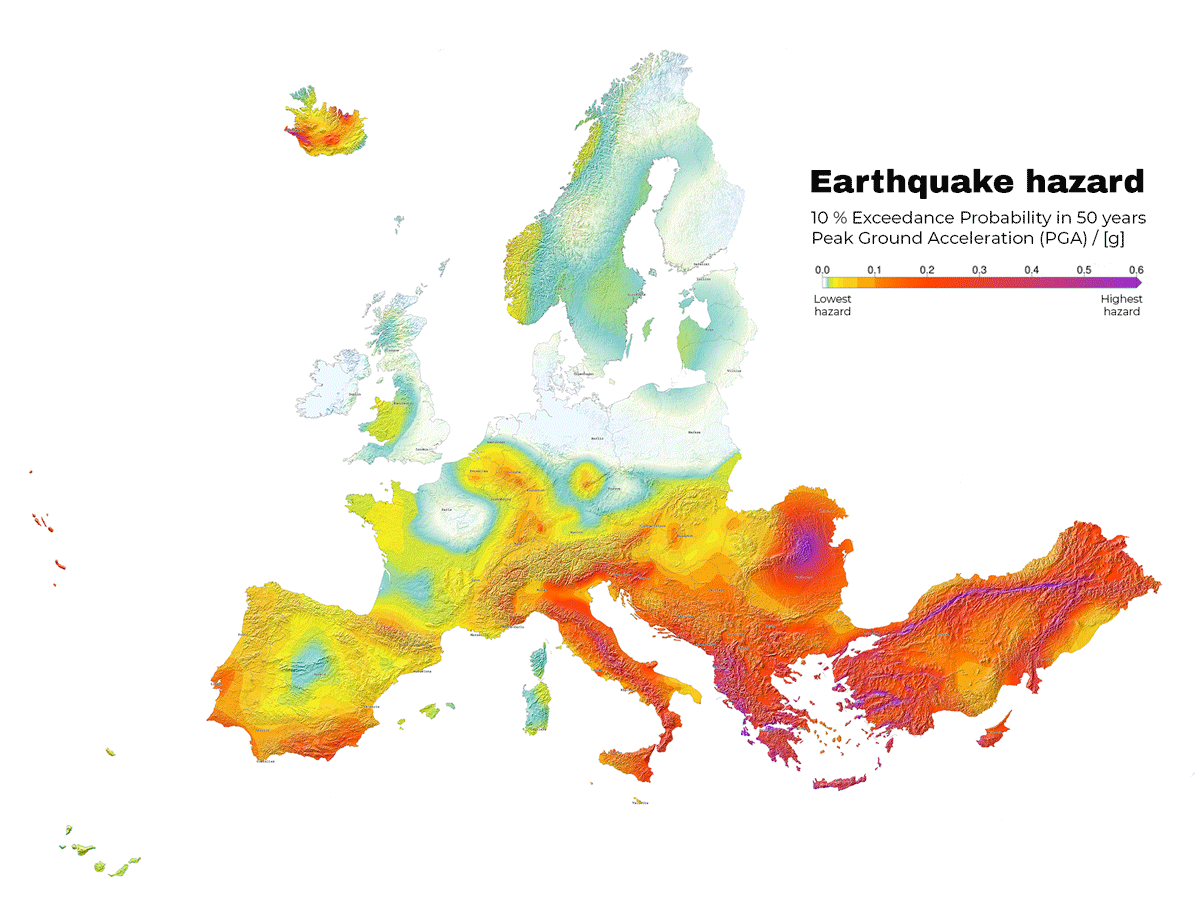Earthquakes in Europe are essentially a result of stress in the earth’s crust. For naturally occurring earthquakes, the source of this stress is plate tectonics. The Eurasian plate encompasses much of Europe’s and Asia’s mainland, and moves with respect to the main neighbouring plates in the South (African plate), Southeast (Anatolian microplate), and West (North-America plate). In addition, there are a number of microplates between Europe and Africa. These make the tectonic picture particularly complex around the Mediterranean Sea including the Alpine region. Because of the microplates, earthquakes in Europe occur across a large area, not only along a well-defined zone.
Greece and Turkey share the highest seismic hazard in the European region.
These are the six main earthquake zones in Europe:
- Greece (African plate)
- Turkey (Anatolian microplate)
- Iceland (North-America plate)
- Italy, Switzerland, Austria, Slovenia, Germany, and France (Adriatic microplate)
- Hungary, Slovakia, Ukraine, and most of the Balkan peninsula (Pannonian Basin and surrounding mountains)
- Spain and Portugal (Iberian microplate)
Learn more
Detailed explanation of the six main earthquakes zones in Europe
